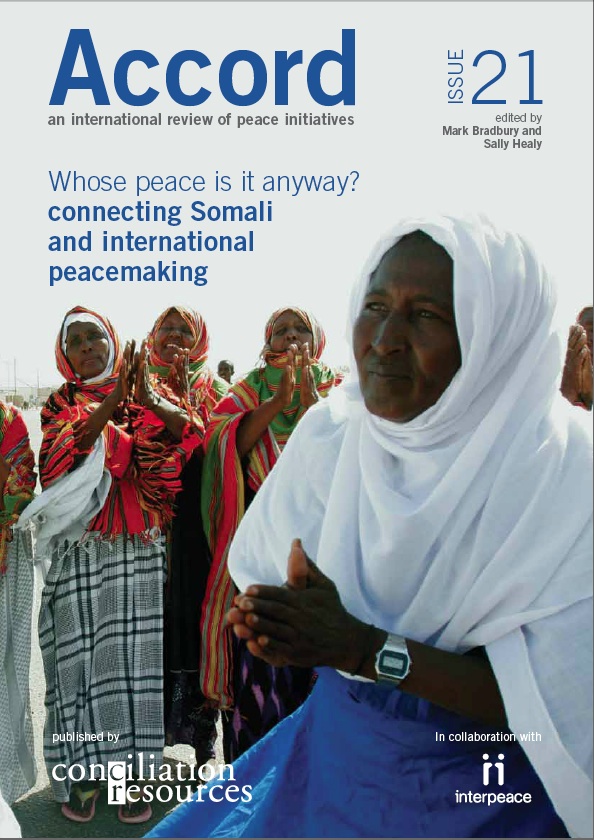The situation in Sool region in northern Somalia demonstrates competing Somali models of belonging, based variously on lineage, territoriality and religious orientation.
Sool region is predominantly inhabited by members of the Dhulbahante clan, part of the Harti clan federation, itself a subset of the larger Darood clan-family. Together with the Isaaq, Warsengeli and Gadabursi clans, the Dhulbahante were part of the British Protectorate of Somaliland in northwestern Somalia until 1960.
The Isaaq are the majority population in the northwest. Historically many Isaaq were allied to the British protectorate, while most Dhulbahante supported the anti-colonial Dervish uprising between 1899 and 1920. During the civil war between the government of Siyad Barre (1969-91) and the Somali National Movement (SNM), the Dhulbahante and the Isaaq stood on opposite sides. While the SNM was predominantly an Isaaq movement, the Dhulbahante generally supported the government.
The SNM took over most of northwestern Somalia in early 1991 and proposed peace negotiations to all other clans in the region. To avoid further fighting Dhulbahante representatives – comprising traditional authorities together with some intellectuals, military figures and politicians – acceded to the majority Isaaq wish to secede from a collapsing Somalia.
By territory the Dhulbahante became part of Somaliland, which claims the borders of the former British Protectorate. Since then a small number of Dhulbahante have cooperated with the Somaliland government, either in the capital city of Hargeisa or in the Sool region. However the majority of the clan never agreed to secession and over the years many Dhulbahante have felt marginalised by Hargeisa and have distanced themselves politically from Somaliland.
Dhulbahante dissenters found a new political home in the Puntland State of Somalia, which was established in the northeast of the country in 1998. Founded as ‘Harti-state’, Puntland brought together all clans descending from Harti (ie Majeerteen, Dhulbahante, Warsangeeli) and a few other Darood clans in the region. Many members of the Dhulbahante actively supported the presidency of Abdullahi Yusuf, the first president of Puntland (1998-2004) and for this were allocated the position of the vice president in the Puntland polity.
The government of Puntland, based in Garowe, aims to re-build a strong and united Somalia within the 1990 state borders. It does not recognise the independence of Somaliland and actively undermines its regional neighbour’s territorial ambitions, claiming Sool and other Harti-inhabited regions of Somaliland. Between 2002 and 2007 Somaliland and Puntland forces clashed several times in the contested boundary areas, although these skirmishes were short lived.
By manoeuvring between Somaliland and Puntland, many Dhulbahante elites, such as traditional authorities and political and military leaders, have lost credibility in the eyes of their own people. The traditional authorities of the clan especially are increasingly perceived as ‘politicians’, a derogatory reference implying that they follow their own self-interests rather than doing what is best for the community.
Everyday life for local people in the Sool borderlands involves a struggle for survival, torn by conflicting affiliations with neighbouring political centres in Hargeisa and Garowe. Members of these borderland communities hold administrative and military office in Somaliland and Puntland. In certain places in Sool region there are two administrations with two police and two military forces, staffed with Dhulbahante and salaried either by Hargeysa or Garowe. Additionally, Dhulbahante managed to get high ranking positions in the TNG, and later in the TFG. In the early 1990s they were also prominently represented in the militant religious movement Al Itihad Al Islamiya that fought for the establishment of an Islamic state in Somalia.
Having multiple affiliations has brought some costs for the Dhulbahante. While they play delicate political roles in Somaliland and Puntland, they are also marginalised by both administrations. They are perceived as strategic allies, but hardly ever fully embraced. Also, Sool region does not attract many resources from the political centres and due to the ongoing conflict between Somaliland and Puntland, it is seen as unstable by the international community. Almost no international aid reaches the region, despite its enormous needs.

